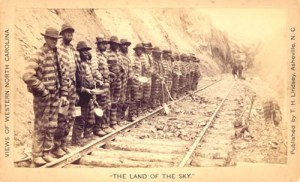So I realize that despite the diversity of genres in which trains appear, this blog has been in a bit of an alt.country/no depression/americana rut lately, and this post will keep up this trend, but I can’t resist writing about a brand spanking new train song from one of my all-time favorite bands. Lucero are based in Memphis, and though they have roots in the punk scene, they have become masters of tear-in-your-beer alt.country that retains a bit of punk spirit. Ben Nichols’s world weary, raspy vocals are always a highlight, but the twisting and turning guitar work should also not be overlooked. My personal favorite of theirs, 2003’s That Much Further West, ebbs and flows, from slow meandering tales of lost love to rousing affirmations and declarations – a rare record that can fit both a night of quiet contemplation and a destructive night out on the town.
The new EP, Texas & Tennessee is a fantastic throw-back to the band’s earlier days, before the horns, pianos and Memphis-style arrangements of recent albums like 1372 Overton Park, and Women and Work. The formula is simple – Ben Nichols singing raspily about heartbreak and loss, with an acoustic guitar backdrop. The four songs off Texas and Tennessee could easily fit on the bands first two records. Who knows if this signals a new direction for the band, or just a simple diversion, but the stripped-down sound certainly suits the band.
But enough about Lucero, lets get to the trains. Union Pacific Line uses trains in a fairly common way – to convey a growing sense of distance in a floundering relationship. A simple pounding drum beat lends the song a sense of momentum and prevents it from becoming a total bummer. The Union Pacific line is one of America’s most famous, making up one half of the first transcontinental railroad. The sprawling line evokes the wide-open spaces of the west, as well as the great space between the narrator and his love. The image of continually leaving trains captures the ambiguity of the relationship and the failure of the narrator to get over his lover. So we can add yet another song to what is becoming a common trend here – trains-as-relationship-destroyers.

